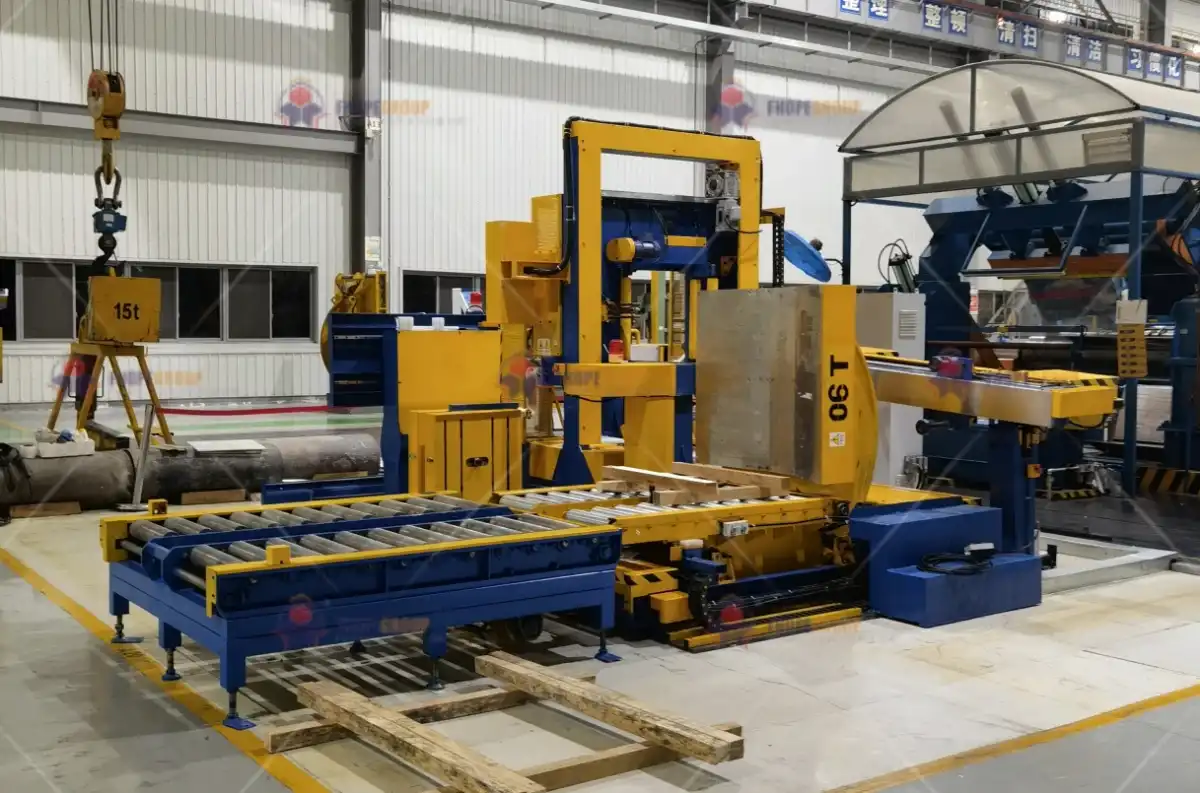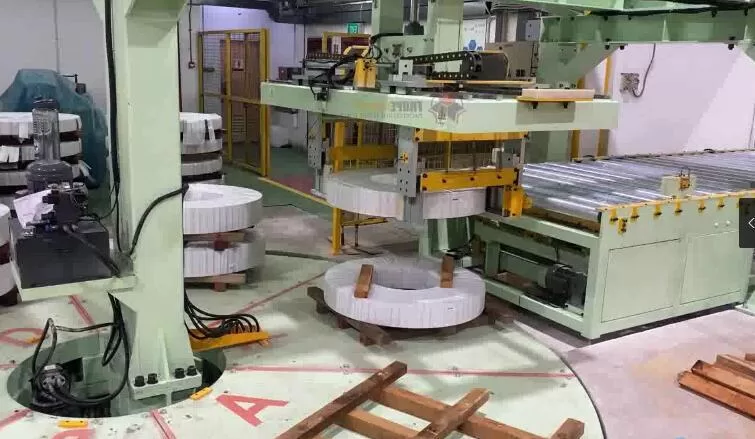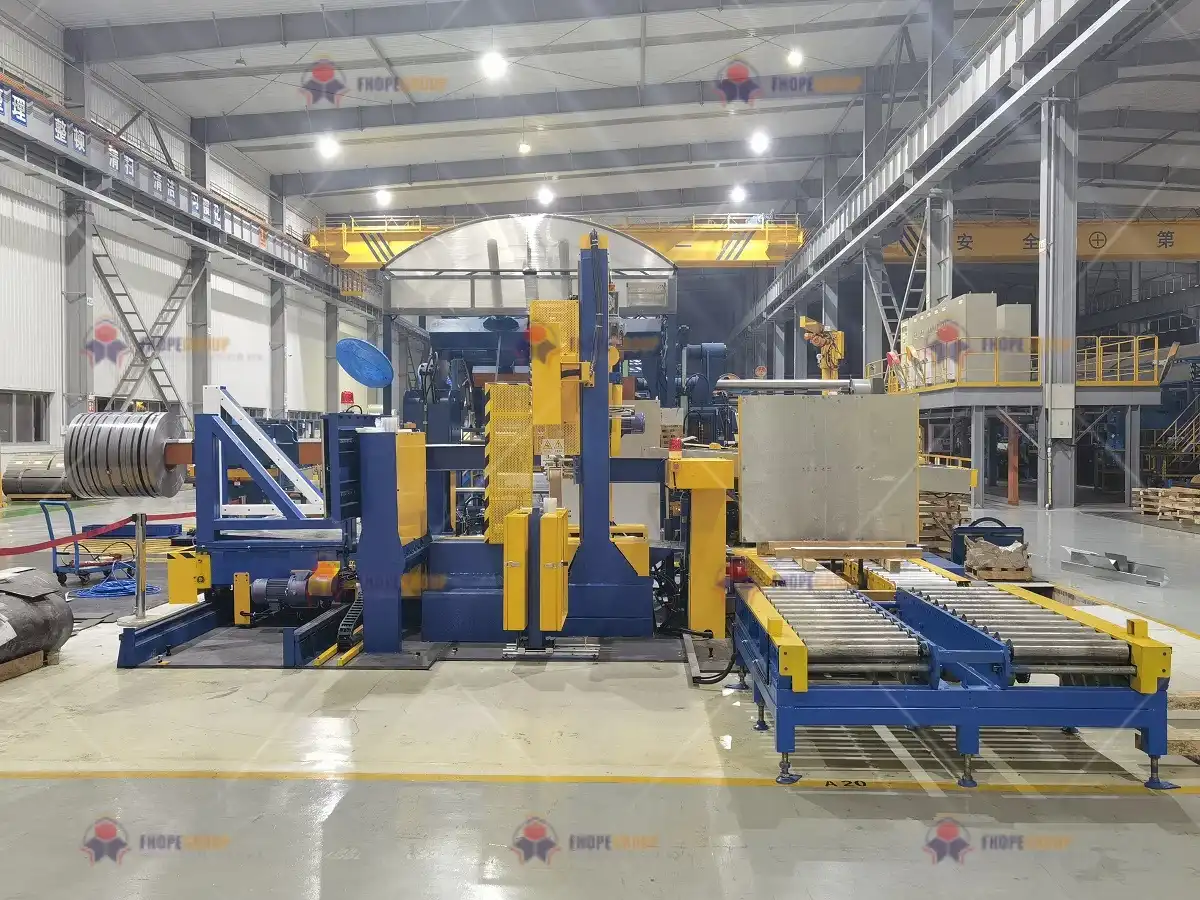Manufacturers face relentless pressure to maximize coil packing line uptime. When aging machinery falters or new regulations demand upgrades, production halts cascade into costly delays. These disruptions erode profitability and strain customer relationships. But what if you could transform reactive firefighting into proactive lifecycle mastery?

Comprehensive lifecycle services for coil packing lines encompass strategic planning, preventive maintenance, predictive diagnostics, and technology upgrades to minimize downtime across all operational phases. By implementing structured methodologies like those in Microsoft Dynamics 365 Lifecycle Services (LCS), manufacturers achieve 20-30% longer equipment lifespan through continuous monitoring, timely part replacements, and system evolution planning. This proactive approach converts capital expenditures into predictable operational investments while maintaining peak throughput.
Transitioning from breakdown dependency to lifecycle optimization requires understanding these four critical service dimensions. Below we dissect each component with actionable strategies validated in metals processing and industrial automation environments.
Understanding Lifecycle Services for Coil Packing Lines
When a coil strapping machine fails during peak production, the true cost extends beyond repair bills to missed shipments and eroded trust. Lifecycle services prevent these scenarios through phase-specific interventions mapped to equipment maturity. Unlike generic maintenance, lifecycle management anticipates degradation patterns unique to wrapping heads, tensioners, and conveyor systems.
Lifecycle services deploy predictive analytics and OEM-certified protocols to align maintenance activities with equipment criticality. Through tools like LCS methodologies, technicians synchronize inspections, lubrication, and calibration with operational schedules—reducing unplanned downtime by up to 45%. This systematic approach transforms random interventions into scheduled optimization events.

Phased Implementation Framework
Industrial data reveals that coil packaging systems degrade predictably across five phases:
| Lifecycle Phase | Key Activities | Critical Metrics | Service Tools |
|---|---|---|---|
| Commissioning | FAT/SAT validation, operator training | Installation accuracy ≥98% | LCS Business Process Modeler |
| Ramp-Up | Parameter fine-tuning, baseline diagnostics | OEE >85% | Cloud-powered support VMs |
| Maturity | Preventive part replacement, lubrication cycles | MTBF ≥1,200 hours | Asset library spares management |
| Decline | Vibration analysis, thermal imaging | Repair costs <15% of replacement | System diagnostics dashboard |
| Renewal | Retrofit feasibility studies, migration testing | ROI >25% | Upgrade analysis modules |
During maturity phases, configuration drift causes 73% of performance losses. For example, hydraulic tensioners in coil strappers gradually lose calibration from metal fatigue. LCS Environment Monitoring detects deviations through IoT sensor integration, triggering auto-calibration before tolerance breaches occur.
Post-decline renewal planning avoids catastrophic failures. ABB’s lifecycle policy advocates 18-month advance assessments using digital twins. By simulating new servo motors on aging turntables, engineers verify compatibility while minimizing line shutdowns. This prevents $150K+ emergency replacements common in metals processing.
Essential Maintenance Strategies for Optimal Performance
Reactive maintenance consumes 35% of coil line operational budgets yet solves only 12% of root causes. Progressive manufacturers now blend three maintenance methodologies to balance cost and reliability.
Predictive maintenance using vibration sensors and thermal cameras reduces coil wrapping failures by 60% through early bearing defect detection. Combined with preventive lubrication schedules and AI-driven anomaly alerts, plants achieve 95% schedule adherence—critical for high-volume steel and aluminum processors where hourly downtime costs exceed $18,000.

Maintenance Tier Optimization
Not all components warrant equal attention. Strategic resource allocation separates critical-path elements from low-impact subsystems:
| Component | Failure Impact | Recommended Strategy | Monitoring Frequency |
|---|---|---|---|
| Strapping Heads | Production halt | Predictive + Spare rotation | Real-time vibration analysis |
| Conveyor Drives | Partial slowdown | Preventive lubrication | Bi-weekly thermography |
| Control PLCs | System-wide stop | Firmware monitoring | Daily health checks |
| Guide Rails | Quality defects | Run-to-failure | Quarterly inspections |
Case Study: A European coil processor integrated LCS Cloud-powered Support to recreate hydraulic failures in Azure VMs. Technicians replicated pressure spikes without stopping production, diagnosing valve stiction in 3 hours versus 3-day traditional troubleshooting. The fix deployed via LCS Configuration Manager during planned maintenance.
For electrical systems, dielectric testing prevents 80% of unplanned stops. Quarterly insulation resistance checks on wrapper motors identify degradation before phase-to-ground faults occur. ABB’s Repair Centers augment this with certified rewind services—restoring windings to OEM specs at 40% of new motor costs.
Navigating Upgrades and Modernization of Coil Packing Systems
Legacy control systems like Siemens S5 or Modicon PLCs create cybersecurity risks and compatibility dead-ends. Modernization bridges this gap through phased technology insertion.
Targeted upgrades extend coil line viability by 10+ years through modular retrofits. By prioritizing HMI modernization and controller updates before mechanical overhaul, manufacturers gain 30% faster ROI. LCS Upgrade Analysis tools map legacy ladder logic to IEC 61131 standards while preserving application knowledge—critical for bespoke packaging sequences.

Modernization Pathway Comparison
Two dominant approaches exist for aging systems:
| Modernization Type | Implementation Time | Cost Factor | Ideal For | Limitations |
|---|---|---|---|---|
| Evolutionary (Component) | 2-4 weeks | $$ | Lines <15 years old | Integration complexity |
| Revolutionary (Full) | 3-6 months | $$$$ | Obsolete controls | Production disruption |
Security hardening drives 70% of upgrades. Windows 7 embedded HMIs lack Credential Guard and Secure Boot—exposing networks to ransomware. Migration to Windows 10 IoT Enterprise with LCS Security Update Service patches vulnerabilities while maintaining SIL3 safety certifications.
For mechanical subsystems, Parts StepUp programs counter obsolescence. ABB’s service replaces discontinued motor drives with modern equivalents using custom mounting plates and signal converters. This avoids $500K+ rewiring while adding EtherNet/IP connectivity for performance analytics.
Leveraging Digital Tools for Lifecycle Management
Cloud platforms like LCS centralize lifecycle data through integrated dashboards—reducing decision latency by 65%. My Control System portals provide OEM-curated documentation, spares sourcing, and failure analytics specific to your coil wrapper model. This single-pane visibility prevents information silos between maintenance, engineering, and operations teams.

Digital Tool Integration Matrix
| Lifecycle Stage | LCS Tools | ABB Services | Key Benefits |
|---|---|---|---|
| Design | Business Process Modeler | Control Room Assessments | Human factor optimization |
| Deploy | Cloud-hosted Environments | FAT/SAT Validation | 98% first-pass commissioning |
| Operate | Environment Monitoring | Collaborative Operations | Remote expert intervention |
| Maintain | Asset Library | Repair Center Network | 48-hour component turnaround |
| Evolve | Upgrade Analysis | System Migration | 40% lower TCO vs. replacement |
Automated alert escalation slashes response times. When vibration thresholds breach on a coil turntable, LCS generates work orders in Dynamics 365 while notifying ABB’s Collaborative Operations Center. Technicians receive part drawings and repair histories before reaching the site—cutting diagnostics by 80%.
For global operations, multi-tenant visibility in My Control System tracks identical wrappers across plants. Benchmarking OEE highlights underperforming units for targeted calibration. Frost & Sullivan cites this capability as key to ABB’s leadership in lifecycle services—delivering 22% longer mean time between failures versus industry averages.
Conclusion
Mastering coil packing line lifecycles demands more than periodic repairs—it requires embedding service intelligence into operational DNA. By integrating Microsoft LCS methodologies with OEM-specific protocols like ABB’s lifecycle policy, manufacturers achieve unprecedented asset longevity. Predictive maintenance intercepts 60% of failures before machine stop occurs, while phased upgrades modernize controls without production shocks. Ultimately, lifecycle services convert reactive cost centers into strategic value generators—where every maintenance event enhances throughput resilience. Embrace these frameworks to transform your packaging operations from vulnerability to industrial dominance.













Leave a Reply
You must be logged in to post a comment.